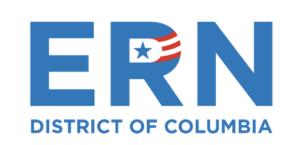
Jessica Giles
State Director
Education Reform Now DC
2021 DC Council’s Committee of the Whole budget oversight hearing:
University of the District of Columbia
Good afternoon Chairman Mendelson, Councilmembers, and staff. My name is Jess Giles. I am a Ward 7 resident and the State Director of Education Reform Now DC (ERN DC). ERN DC is a non-profit organization that fights to ensure our public education system in the District justly and equitably serves all students.
ERN DC has five priority areas, one of which is Higher Education: Quality, Affordability & Opportunity. Our goal is to ensure all students, particularly students of color and students from low-income families, are prepared to — and do — graduate from high school and receive a high-quality, affordable college education or the work-based experience and credentials necessary to immediately earn a livable wage. My testimony today will outline some recommendations on how to provide additional support to students with the FY2022 proposed budget.
COVID-19 has exacerbated inequities and our students, educators, school leaders, and families are experiencing its negative impact. We know that the University of the District of Columbia (UDC) has engaged in a number of efforts to meet students where they are during the pandemic, for which we applaud. We urge continued efforts to: boost enrollment by re-engaging those students who have dropped out, increase enrollment intensity (i.e. moving students from part-time to full-time status), and boost retention and completion.
UDC has received three major infusions of federal aid in the last year associated with COVID-19 relief packages totaling an estimated $22,062,000 (total reserved for Direct Student Aid: $9,457,763). Those three tranches were included in the:
- American Rescue Plan Act (ARP): $11,912,000 ($5,956,000 reserved for direct student aid) for UDC;
- Coronavirus Response and Relief Supplemental Appropriations Act 2021: $6,756,000 ($1,804,763 reserved for direct student aid) for UDC; and
- CARES Act: $3,394,000 ($1,697,000 reserved for direct student aid) for UDC.
Additionally, the District itself also received separate, substantial funds for “State and Local Fiscal Recovery” as per ARP, totaling $2,374,254,185.
Therefore, there is a unique opportunity to go above and beyond for our students, so we never return to “normal” education again. We make the following three recommendations:
- Provide grant aid sufficient to move part-time students to full-time status. All other things being equal, full-time students graduate at three times the rate of part-time students. UDC should use ARP aid to encourage part-time students to shift to full-time status with 100% of financial need, including that for living, food, and child care expenses, supported solely with additional grant aid. Degree attainment is the best ticket to the middle class.
- Fund outside community-based provider “soft touch” efforts. The District and UDC, separately, should further partner with community-based organizations (CBO) whereby CBO caseworkers are linked directly with a cohort of UDC students to provide individualized assistance with academic planning, making use of on-campus tutoring and student support services, and most critically, accessing public social services not provided by local college (e.g. food aid, housing assistance, and tax benefit filing assistance).
Model programs include Fort Worth, Texas’ Stay the Course initiative which partners with Catholic Charities and the higher expense ASAP initiative employed in New York and Ohio. Independent studies published by the National Bureau of Economic Research and MRDC have shown these programs have doubled completion rates.
- Reduce student debt. The most disturbing statistic involving higher education that we have seen in the last decade is the student loan default rate of Black borrowers. Most are aware of the doubling of student loan debt in recent decades, and there is much reporting in the media about five and six figure debt levels of individual undergraduates. But most troubling is that measured over a typical 12 year repayment period, the Black borrower student loan default rate is 49%, according to a series of studies. And for most borrowers that default, the amount on which they default is less than $10,000. In fact, for half of federal student loan defaulters, the amount which they owe is less than $5,000.
Regardless of the amount owed individually by those who default, the outcome is often a financial calamity. As per federal law, student loan debt cannot be discharged in bankruptcy unlike credit card debt. A student with wrecked credit will have trouble getting a mortgage, pay high late fees that accumulate interest, have to deal with collection agencies, and likely have difficulty getting a job to pay off their debt as employers check credit reports on prospective employees.
The District, if not UDC, should eliminate student loan debt for first-year students.
Thank you for allowing me the opportunity to testify. I am available to answer any questions that you may have.